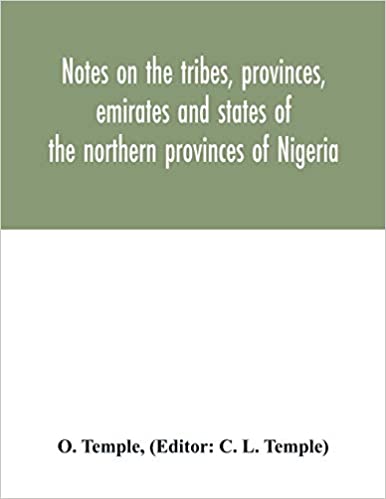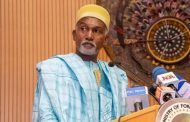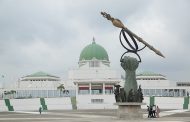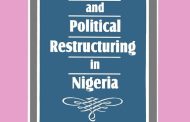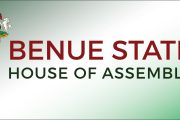
The author, Mr. Ibbi of the Postgraduate School Veritas University, Abuja
A Special Report by Patrick Sunday Ibbi (patricksundayibbi@gmail.com)
On the 30th of April, 2022, a passionate assembly of middle-belters in Nigeria was made possible by the Zoom platform, and it drew close to a hundred people from far and wide. The solemn assembly was organized by the forum Uniting the Middle Belt (UMB). UMB is a strategic platform that works in groups to bring together specialists from all walks of life with the objective of collectively and individually understanding the concerns and perhaps proposing solutions to the challenges of Nigeria’s Middle-Belt region. As a result, it is a collection of professionals and concerned individuals from various workgroups, including legal, administrative, financial, academic, economic, security, social networking, the general public, as well as external alliance, and internal unification fronts. Anyone from the northern region of Nigeria with similar interests is invited to join the platform, as long as they are impartial and can collaborate with religious, political, and ethnic organizations to achieve UMB’s long-term goals and objectives. UMB’s strategic objective is to establish a voice and identity at the helms of affairs in Nigeria, particularly among marginalized minority tribes in the territories extending from Benue State to the southern parts of Kaduna State, Kebbi State, Bauchi State, Gombe State, Yobe State, and Borno State. UMB sorts to generate optimal solutions based on sound knowledge and experience, and to propose solutions to regional and national concerns.
The April edition of its Zoom event featured a discussion titled “A History of the Middle -Belt of Nigeria in Early Written History.” It was delivered by Dr Philip Hayab John, a linguist, lecturer, and expert in African Studies, who discovered that the middle belters are still grappling with their identity and frequently see themselves relegated to the background and absorbed by the north, which frequently denies them a voice in most cases. Dr. Hayab, a widely read and travelled scholar, took all participants on an interesting, eye-opening background of the middle-belt for the purpose of understanding where and how the whole journey began—because, as Soren Kierkegaard proposed, life is to be lived forward, but understood backwards.
Consistent with Dudley (1968) and Ochonu (2014), the Middle Belt is informally described as “the summation of diverse ethnic organizations” of non-Muslim communities in northern Nigeria that have banded together to challenge the Fulani and Hausa caliphate’s dominance. The area is frequently referred to be northern Nigeria’s centre region, as evidenced by the country’s current geopolitical split. This region developed as a result of the British colonial administrative error of stratifying northern Nigeria into Muslims—to be rulers—and non-Muslims—to be fiefdoms, or what Karl Marx correctly referred to as the lumpen proletariat. According to Dr. Hayab, extensive study has revealed that the majority of colonialist publications simply categorised the north as Muslims or Pagans. Temple (1919), Meek (1922)’s description of ethnic groups in northern Nigeria as “tribes,” and Gun (1956) exacerbated the situation by titling his work “Pagan People of the Central Area of Northern Nigeria,” encouraging the colonial administrator with the longest tenure—Sharwood Bryan Smith—to think of Muslims as “superior” and ethnic minorities as “inferior.” Thus, the colonial administration compelled the majority of non-Muslim northerners to live under the caliphate’s control. This resulted in a slew of grievances and objections, which contributed to the Middle Belt’s growth.

The late Joseph Tarka, who emerged leader of the UMBC in January 1957
Dr. Hayab expanded on the plethora of literature on the people and groups of Nigeria’s Middle Belt by discussing the Middle Belt’s rise from the Northern Protectorate, later Northern Province, and Northern Region, as well as prior to the Middle Belt’s forced marriage with other regions of the country in 1960. According to Barnes (2007),
The Middle Belt should be understood as the quest for asserting an esteemed Christian identity by non-Muslim northerners who are no longer willing to be addressed as pagans, subservient to the emirate system, but as groups of people who are not necessarily united culturally but through a shared Christian faith and values of equity and brotherhood to all mankind.
In line with Barnes’ assertions above, Dr Hayab traced the struggle of middle belters such as Patrick Dokotri, a Berom and former Catholic seminarian from Jos, Pastor David Lot, and other northern Christians in establishing the Non-Muslims League (NML) in response to a motion for the “restriction” of Christian missions in Northern Nigeria at a Northern Region House of Assembly meeting in Kaduna, which resulted in the formation of alliances such as the Middle Zone League (MZL), the United Middle Belt Congress (UMBC) around 1952—1954 among others. The speaker revealed that, despite the Middle Belt’s origins in Christian identity, it was ethnic group associations that provided the lifeline for the struggle’s survival, allowing northerners who converted to Islam to participate in the vision for a separate Middle Belt Region, where, for example, the leader of the Goemai ethnic group near Shendam, a Muslim, was one of the strategic presenters of the pro-self-determination of the Middle Belt. Thus, the Middle belt should not be defined by religion but rather by geographical borders to ensure “global” inclusion.

Theatre of cultural and religious violence of late in Nigeria’s politics of space
The UMBC reached new heights under the leadership of Joseph S. Tarka during her 1957 convention in Lafia, particularly in Benue Province and among the Tiv people. As a result, a sizable proportion of the population frequently associates the Middle Belt struggle with the Tiv. Since time immemorial, the Middle Belt has decried systemic discrimination, particularly in the Native Authority’s civil service, denial of women’s rights, as Mary Princewill, Berom Women, has complained, and denigration of Middle Belt languages in the Native Administration’s educational system. The Willink Commission’s suggestions were ostensibly to ease the anxieties of middle belters and other minority ethnic groups in Nigeria, but modern evidence demonstrates otherwise. As a result, fronts such as the UMB and others have been established.
The presenter closed by recounting the Middle Belters’ ancient battles before to independence and lamented their continued existence in contemporary times. His argument is that the struggle continues because when certain appointments are made, they are greeted with whether the appointee is or is not a core Northerner; people basically have to apply for land before they can build churches in certain states in the North; the Middle-Belt is practically confronting genocide today in Benue, Plateau, Southern Kaduna; how did Kaduna and Kafanchan become part of the North-West; what is there to show that there is not a strategic plan to block the Middle-Belters, amongst others.
Thus, the clarion call to unite the Middle Belt on all fronts for the region’s entire freedom, empowerment, and overall development, with the goal of the region establishing its identity and voice at the helms of Nigerian affairs. Thus, the Middle Belt is currently facing genocide, despite the fact that the Nigerian state rejects this reality.
Some participants also made comments and were given the opportunity to ask questions in response to the presentations. For example, Dr. Eugene Ivase of Gboko, Benue State, verified that his mother, Dr. Elizabeth Afadzwana Ivase, who died recently, testified at the Willink Commission for the Minorities as the lone advocate for women in Northern Nigeria to be permitted to vote and be voted for in political elections.
The convener, Dr Gideon Damaryam, intimated all participants that the UMB-Uniting the Middle Belt- is actively meeting with middle-belt groups to understand what everyone is doing. The Middle Belt hopes to identify potential areas of cooperation and complement with platforms such as Conference of Autochthonous Ethnic Nationalities Communities Development Associations (CONAECDA), and NINAS-Middle Belt, among others. Thus, for now, the struggle continues, with particular reference to the world getting to hear the stories of some of the “animals”. The logic is not far-fetched: If the animals in the forest cannot rise to tell their stories, the only story people will hear is the hunter’s story.

